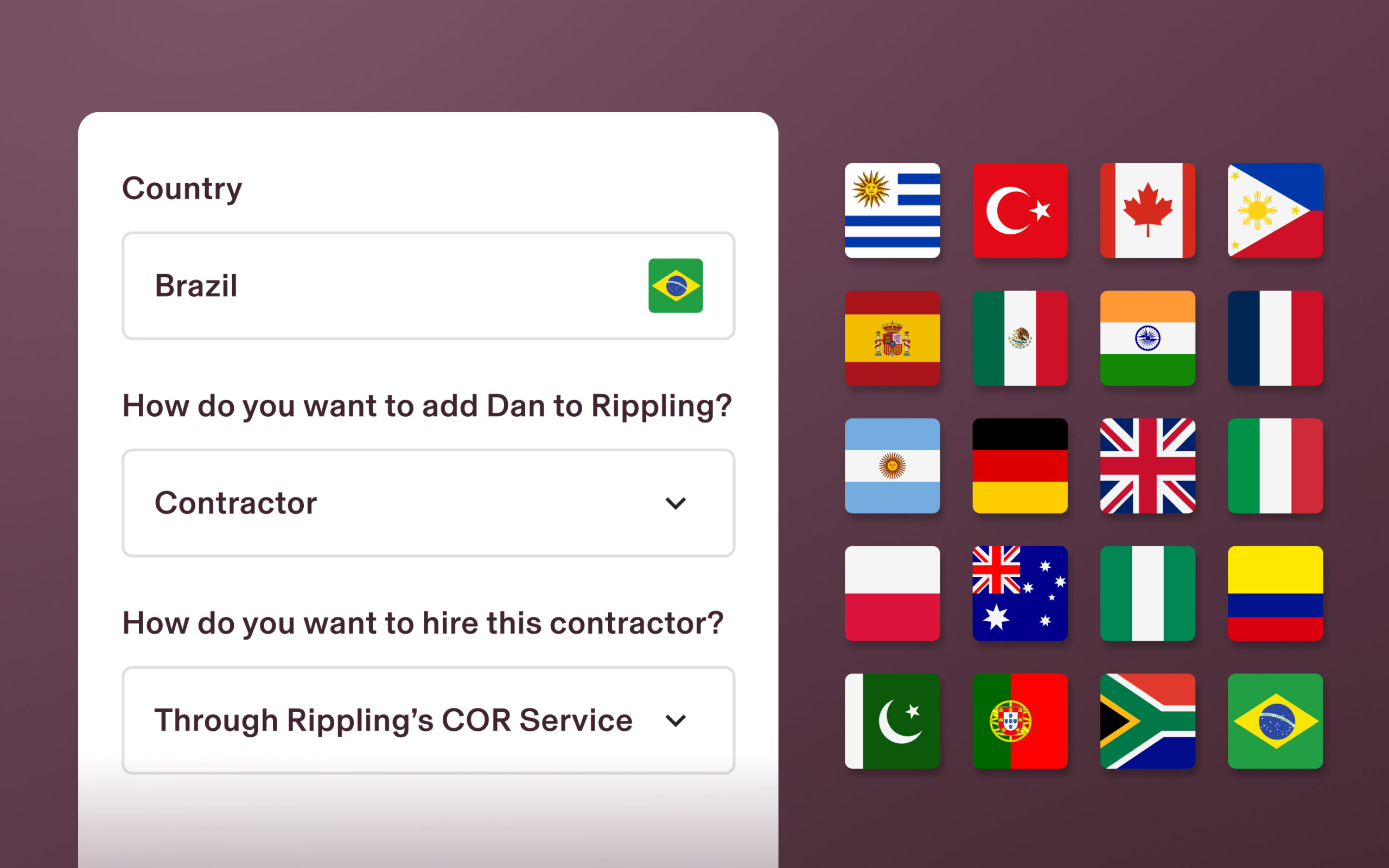How to Calculate Turnover Rate: Formula & Step-by-Step Guide

Your company is growing fast, hiring left and right, and everything looks great on paper.
But there's a problem hiding in plain sight: while you're bringing people in the front door, others are quietly slipping out the back. Without tracking your employee turnover rate, you might be running on a hamster wheel, working harder and harder just to stay in the same place.
The thing is, turnover is expensive, disruptive, and often avoidable. But you can't fix what you can't measure. If you're still relying on gut feelings about whether "people seem to be leaving more often lately," you're missing the bigger picture.
The reality is that replacing a single employee can cost anywhere from 50% to 200% of their annual salary when you factor in recruiting, interviewing, training, and the productivity hit while everyone adjusts. For a company with 100 employees experiencing 20% annual turnover, that's potentially six figures in costs every year.
The good news? Calculating your employee turnover rate is straightforward once you know the formula and process. More importantly, tracking it consistently gives you the data you need to spot problems early and measure whether your employee retention strategies are actually working.
What are employee turnover rates, and how are they determined?
Employee turnover rate simply measures the percentage of employees who leave your organization during a specific time period. It's one of the most telling HR metrics because it directly impacts productivity, costs, and team morale.
Employee turnover falls into two main categories:
- Voluntary turnover occurs when employees choose to leave, whether for better opportunities, career changes, or dissatisfaction with their current role. This type of turnover often provides the most actionable insights for improving your workplace.
- Involuntary turnover happens when you terminate employees due to performance issues, misconduct, or business needs like layoffs or restructuring. While sometimes necessary, high involuntary turnover can indicate problems with hiring practices or management.
Understanding the difference between each matter. If most of your turnover is voluntary, you're probably dealing with employee retention issues that might call for better compensation or work culture improvements. If it's mostly involuntary, you might need to look at your screening and hiring practices instead.
What is the formula for employee turnover percentage?
The standard employee turnover formula is refreshingly simple:
(Number of employee separations ÷ average number of employees) × 100
Let's break down each piece:
- Number of employee separations: Count everyone who left during your chosen period, from resignations and terminations, to layoffs and retirements.
- Average number of employees: Take your headcount at the start of the period, add your headcount at the end, then divide by two. This gives you a more accurate picture than just using your ending headcount.
- Multiply by 100: Converts your decimal into a percentage that's easier to communicate.
The beauty of this formula is its flexibility. Whether you're calculating annual, quarterly, or monthly staff turnover, the math stays the same. Just make sure your separation count and headcount average cover exactly the same time period.
Most companies focus on annual employee turnover rates because they smooth out seasonal fluctuations and make for easier year-over-year comparisons. But if you're in rapid growth mode or dealing with retention challenges, quarterly or even monthly calculations can help you spot trends before they become major problems.
How to calculate turnover rate in 8 steps
Step 1: Define the period for analysis
Pick your timeframe based on what you actually need to know:
- Annual rates give you the big picture and work well for benchmarking against industry standards.
- Quarterly rates help you catch seasonal patterns or see how specific initiatives are working.
- Monthly rates offer the most detail but can be noisy—a couple of departures in a small team can make your employee turnover rate look alarming when it's really just normal fluctuation.
Step 2: Count the number of employee separations
This sounds obvious, but be thorough. Count every departure, regardless of whether they gave two weeks' notice or were escorted out the same day. Include resignations, terminations, layoffs, retirements, and even deaths. However, don't count temporary leaves of absence, as these employees remain on your payroll.
Keep track of why people are leaving while you're at it. This data becomes invaluable when you're trying to figure out what's driving your turnover rate.
Step 3: Calculate the average number of employees during the period
Use the simple average method: add your headcount at the beginning of the period to your headcount at the end, then divide by two. For more precision with longer periods, consider taking monthly snapshots and averaging those numbers.
For example, if you started January with 100 employees and ended with 120, your average would be (100 + 120) ÷ 2 = 110 employees.
Step 4: Plug values into the employee turnover rate formula
Apply the basic formula with your specific numbers. If 15 employees left during a year when you averaged 110 employees, your calculation would be: (15 ÷ 110) × 100 = 13.6%. Double-check your math and ensure your separation count and average headcount cover identical time periods.
Step 5: Convert the result into a percentage
Multiplying by 100 gives you a percentage that's easy to communicate and compare. A turnover rate of 0.136 becomes 13.6%, which immediately tells stakeholders that roughly 14 out of every 100 employees left during the period.
Step 6: Interpret what the percentage means for your business
This is where context becomes everything. A 20% employee turnover rate might be excellent for a call center, but concerning for a law firm. Compare your results to the average turnover rate in your industry, your historical data, and your business goals. Also, remember that not all turnover is bad. Sometimes, losing poor performers or people who aren't a cultural fit actually helps your organization.
Step 7: Segment turnover by department, role, or location
Company-wide averages can hide serious problems. You might have 15% overall turnover only to discover that one department has 40% turnover while another has only 5%.
You can break down your numbers by:
- Department or team
- Job level (entry-level vs. senior roles)
- Location (if you have multiple offices)
- Tenure (are new hires leaving quickly, or are veterans calling it quits?)
- Manager (some managers consistently lose people)
This granular view shows you exactly where to focus your retention efforts.
Step 8: Track changes over time for trend analysis
Single snapshots provide limited value. Track your employee turnover rates consistently over multiple periods to identify trends, measure the impact of retention initiatives, and predict future staffing needs. Look for seasonal patterns, the effects of major organizational changes, and correlations with business performance metrics.
Employee turnover rate calculation examples
Let's walk through some real scenarios to make this concrete.
Annual turnover rate example
TechStart Inc. began 2024 with 200 employees and ended with 240 employees. During the year, 36 employees left the company.
- Employee separations: 36
- Average headcount: (200 + 240) ÷ 2 = 220
- Annual turnover rate: (36 ÷ 220) × 100 = 16.4%
Even though they're growing, they're losing people at a rate that might be concerning (depending on their industry).
Quarterly turnover rate example
During Q2 (April-June), ServicePlus started with 80 employees and ended with 85. Seven employees left during the quarter.
- Employee separations: 7
- Average headcount: (80 + 85) ÷ 2 = 82.5
- Quarterly turnover rate: (7 ÷ 82.5) × 100 = 8.5%
Monthly turnover rate example
In March, RetailCorp had 150 employees at the start of the month and 145 at the end. Five employees left during March.
- Employee separations: 5
- Average headcount: (150 + 145) ÷ 2 = 147.5
- Monthly turnover rate: (5 ÷ 147.5) × 100 = 3.4%
How to interpret employee turnover rate results
Raw numbers don't mean much without context. What counts as "good" or "bad" employee turnover varies wildly by industry, role type, and even geographic location.
Industry benchmarks give you a starting point, though they vary widely. According to S&P global's corporate sustainability assessment of 2,731 companies, the consumer discretionary sector saw the highest voluntary turnover at 20.5%, while the energy sector had the lowest at 7.7%. Real estate followed closely behind consumer discretionary with 16.9% voluntary turnover, and information technology maintained a moderate 12.2% rate.
These patterns make sense when you consider industry characteristics. Technology companies typically see moderate employee turnover rates due to competitive talent markets and frequent job hopping. Healthcare organizations tend to have lower rates due to specialized skills and longer training periods.
Retail and hospitality generally experience the highest turnover due to seasonal work and entry-level positions, while professional services firms usually maintain relatively stable workforces. However, voluntary turnover has increased across all sectors over the past four years, making retention strategies more critical than ever.
High turnover rate (consistently above industry average) usually points to fixable problems:
- Pay that's fallen behind market rates
- Managers who shouldn't be managing people
- Dead-end jobs with no growth opportunities
- Toxic culture or work environments
- Unrealistic expectations or poor role clarity
Low turnover rate (significantly below industry average) sounds great but can sometimes indicate:
- Strong culture and competitive compensation (this is what you want)
- Limited external opportunities (might not last)
- Complacency or lack of fresh perspectives
- People staying because they're comfortable, not because they're engaged
The key is understanding what's driving your numbers. Exit interviews, stay interviews, and employee satisfaction surveys help you figure out whether your turnover rate reflects success or signals trouble ahead.
Common mistakes to avoid when calculating employee turnover
Even with a simple formula, it's easy to make errors that skew your results and lead to wrong conclusions about your workforce stability. Here are the most frequent calculation mistakes and how to avoid them:
Confusing total headcount with average headcount
This is one common error. If you grew from 100 to 200 employees and had 30 departures, using 200 as your denominator gives you 15% turnover. Using the correct average of 150 gives you 20%, a significant difference that could affect how you interpret your results. Using your ending headcount makes your turnover look artificially low because you're dividing by a larger number that includes people who weren't even there for most of the period.
Misclassifying resignations vs. internal transfers
Internal moves shouldn't count as turnover since the person is still with your company. Only count actual departures. However, if someone transfers because they're unhappy with their current manager, that's still a retention issue worth tracking separately.
Ignoring part-time or seasonal employees
Decide upfront whether to include part-time, seasonal, or temporary workers in your calculations. Whatever you choose, be consistent across all periods to ensure accurate comparisons.
Not segmenting by department or role
Company-wide averages can mask serious problems in specific areas. A department with high turnover rates might be hidden by other departments with low turnover rates. Always analyze turnover at multiple levels.
How to reduce turnover rates
Knowing your turnover rate is just the first step. Here's how to implement effective retention strategies:
1. Improve the hiring process
Bad hires often become quick departures. Be honest about role expectations, company culture, and growth opportunities during interviews. Use structured interviews and involve team members to ensure a good cultural fit. It's better to take longer to find the right person than to constantly replace the wrong ones.
2. Prioritize onboarding and training
First impressions stick. Create a structured onboarding process that introduces new hires to your culture, gives them the tools they need, and sets clear expectations. Assign mentors or buddies for the first few months. Poor onboarding often leads to departures within 90 days, which really hurts your turnover numbers.
3. Regularly gather employee feedback
Don't wait for exit interviews to understand problems. Regular pulse surveys, one-on-ones, and stay interviews help you identify and address issues before people start job hunting. The crucial part: actually act on the feedback. Surveys without follow-up action often make things worse.
4. Offer career growth and development
People leave when they feel stuck. Create clear advancement paths, offer skill-building opportunities, and support external learning through conferences or course reimbursements. Even if promotions aren't immediately available, show people you're investing in their future.
5. Foster a positive work culture
Culture eats strategy for breakfast, and it certainly affects employee retention. Promote work-life balance, recognize achievements, encourage collaboration, and address toxic behaviors quickly. Lead by example. Managers set the tone for their teams, so invest in leadership development and hold managers accountable for their team's engagement.
6. Benchmark compensation and benefits
While money isn't everything, being significantly underpaid will drive departures regardless of how great your culture is. Review market rates annually and adjust when necessary. Also consider total rewards, not just salary. Flexible work arrangements, comprehensive benefits, and unique perks can offset lower base compensation.
How Rippling helps you track and reduce turnover rates
Modern HRIS platforms like Rippling's HRIS software make turnover analysis easier and more insightful. Instead of manually tracking departures and calculating averages in spreadsheets, integrated systems automatically capture employee lifecycle events and generate real-time turnover reports.
Rippling's headcount planning tools provide visibility into hiring patterns, departure trends, and workforce costs across departments and locations. The platform segments turnover data automatically, highlighting problem areas that might otherwise go unnoticed.
Beyond tracking, Rippling helps reduce turnover through better employee experiences. Streamlined onboarding, self-service capabilities, and integrated benefits administration create positive first impressions and ongoing satisfaction. When employees can easily access information, request time off, and manage their benefits, they're more likely to stay engaged.
FAQs about how to calculate the turnover rate
What is considered a good employee turnover rate?
A "good" turnover rate depends on your industry, role types, and business model. There's no magic number that works for everyone. Generally, annual turnover under 15% is solid for most office-based roles, while 10% or less is excellent. But context matters more than the raw percentage. A 25% turnover rate might be normal for customer service roles, but alarming for specialized positions that take months to fill.
What's the difference between retention and turnover?
Retention and turnover are opposite sides of the same coin. If your turnover rate is 15%, your retention rate is 85%. Both metrics measure workforce stability, but retention focuses on employees who stay, while turnover focuses on those who leave. Many teams find it motivating to track both; employee turnover rate to show leadership why action is needed, and employee retention rate to demonstrate that your efforts are working.
How can I lower my company's turnover rate?
Start by finding out why people leave. Use exit interviews and feedback to spot patterns like poor managers or limited growth. Focus on what you can control: fair pay, management training, career paths, and work-life balance. Small, steady improvements in several areas work better than big changes in one.
This blog is based on information available to Rippling as of June 30, 2025.
Disclaimer: Rippling and its affiliates do not provide tax, accounting, or legal advice. This material has been prepared for informational purposes only, and is not intended to provide or be relied on for tax, accounting, or legal advice. You should consult your own tax, accounting, and legal advisors before engaging in any related activities or transactions.






